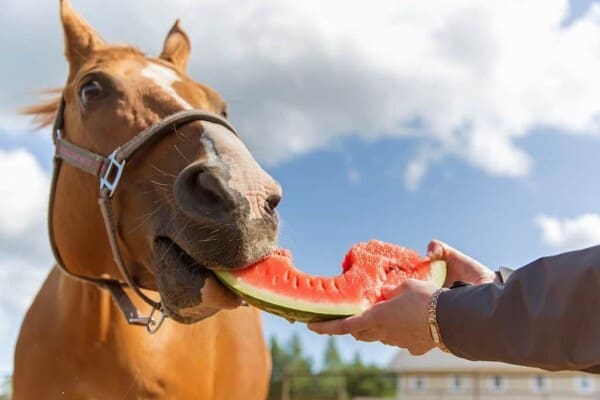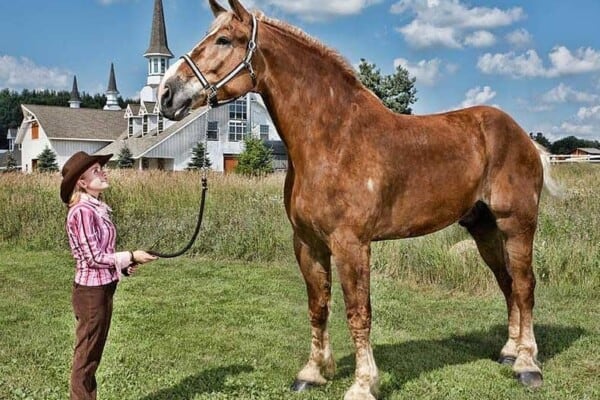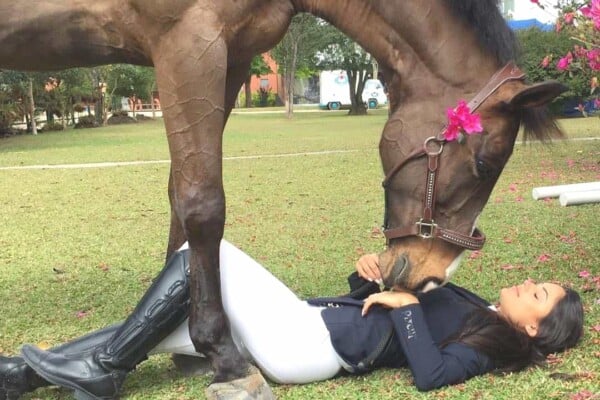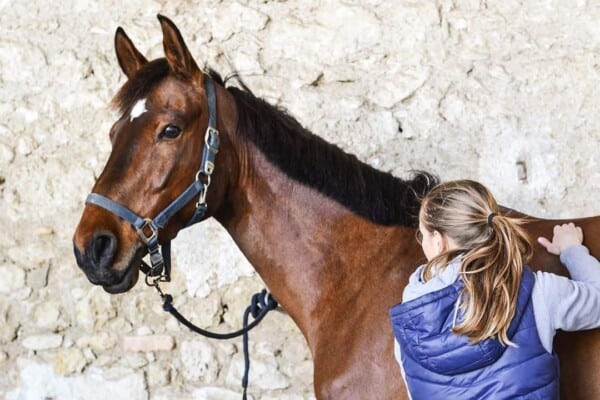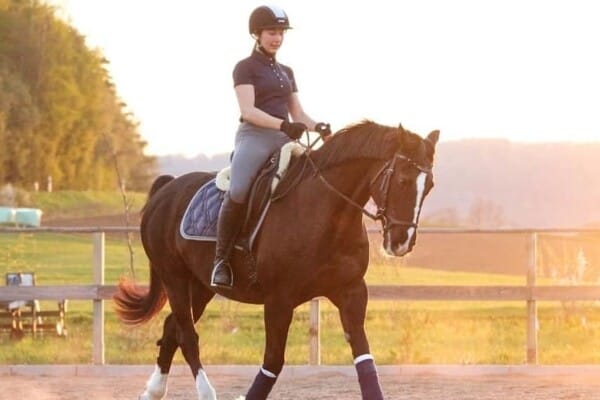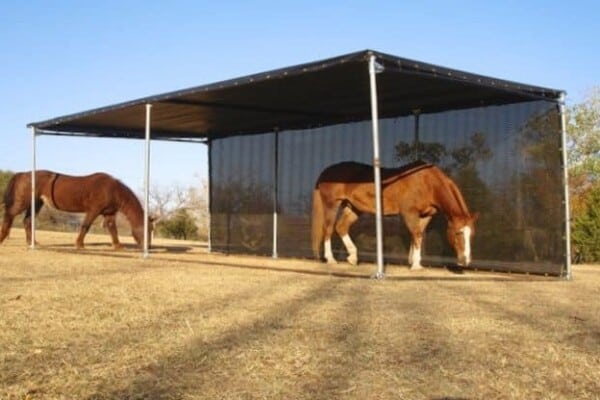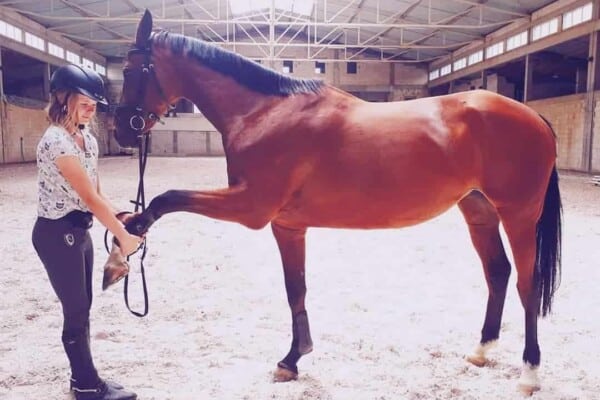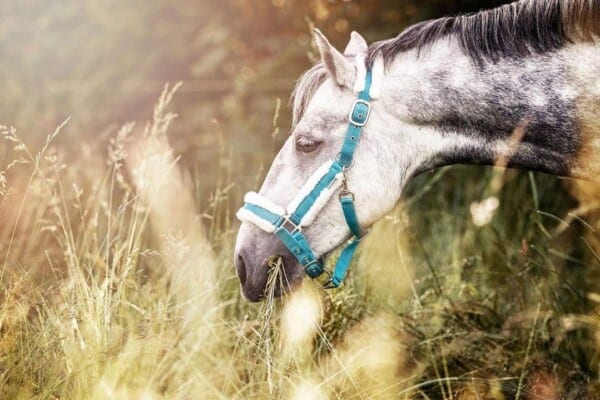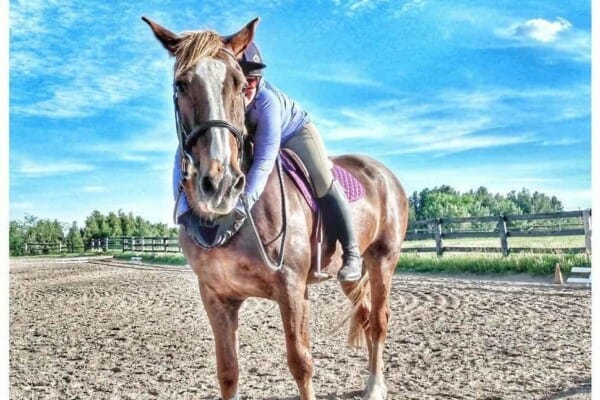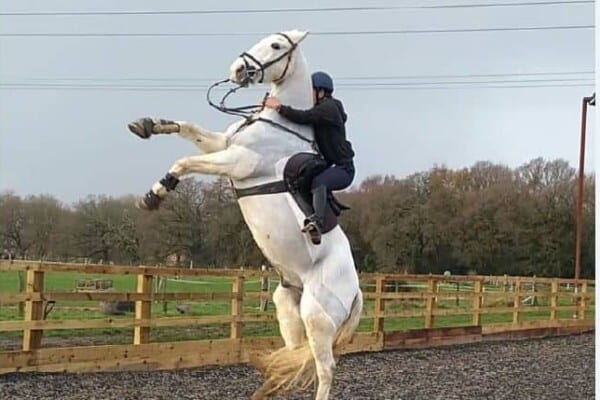A horses vision determines the way in which they perceive and interact with the world around them. They have large that are located laterally on their face which gives them an excellent range of vision. As a prey animal this range of vision is particularly useful when it comes to spotting predators.
Understanding a horses vision helps humans to better understand their behavior and personality. Knowing their strengths and limitations can help us to be better horse owners and riders. The following list contains some interesting facts that you may not have known about a horses vision.
1. The equine eye is one of the largest of any living land mammal
As you are probably aware horses have very large eyes. They have large horizontal pupils that are common in grazing animals.
In general high speed mammals like cheetahs and horses have very large eyes as it gives them better vision to avoid colliding with obstacles when moving at high speed. Their large eyes also give them the ability to pick up even the slightest movement in their periphery. As a prey animal this is an excellent quality to have when living among potential predators.
2. Horses have 2 blind spots
In general horses have a very impressive range of vision. They can see almost 360 degrees around them thanks to their large lateral eyes. This vision gives them an excellent field of view for spotting predators in the wild. However they have two small blindspots. Like humans they have a blindspot directly behind them, but they also have a blindspot right in front of them. This blindspot means they cannot see objects at the end of their face extending out to approximately 6 foot in front of them. This also means they cannot see the grass they are grazing. Instead they use the whiskers at the end of their nose to help them feel.
Horses’ forward blind spot also affects how they approach objects. As they approach an object they will ultimate lose visibility of it if it remains directly in front of them
3. They are not completely color blind
There is a common misconception that horses are color blind but this is not true. Most humans are trichromatics which means that we perceive the world through three primary colors (red, green, and blue). Horses in comparison are dichromatics and see naturally perceive the world through two primary colors (blue and green). Their vision is comparable to humans who have a red-green deficiency that is sometimes called color blindness.
4. They cannot see fine details very well
Acuity in vision terms is the the ability to discriminate fine detail while focusing on something in the center of the visual field. In comparison to humans horses have worse acuity than us. Normal human acuity is called 20/20 vision, while horses would have 20/30 vision as standard. This means than what a horse see’s in front of them is quite different to what the human see’s. For example details on a fence may be significantly more blurred and will only come into focus much later for the horse than when compared to their rider.
The drop in a horse’s acuity when moved off center is less clear with considerably less evidence available.
5. They have good night vision
This is one area where horses have a significant advantage over their human companions. In general horses have excellent night vision and only require partial light to help them navigate. Even with only moonlight their vision may be comparable to a humans vision during full daylight.
This is because horses have a reflective panel on their retina. This panel enables them to draw in whatever light is available in order to optimize their vision in darkness. This helps horses to safely navigate trails and woods at night-time. However it should be noted that they do not have perfect vision and we need to be mindful if bringing a horse to a dense wilderness area or tricky sub terrain with very limited light.
Similar to humans horses require approximately 15 minutes for their vision to adjust to a darker environment.
6. Horses use Monocular and Binocular Vision
Horses use both binocular and monocular vision and have the ability to switch between the two. The placement of their eyes on the side of their head gives them excellent monocular vision. Monocular vision allows the horse to see different objects at the same time. This is particularly usual for spotting predators or scanning the horizon.
However horses also have the ability to focus both of their eyes on things at the same time using binocular vision. Binocular vision is what humans use and it us to get a more complete picture of an object and its surroundings. Crucially it allows a horse to get a more complete picture of an object or space behind an obstacle. This is very useful when moving through terrain at speed or jumping over fences or obstacles



